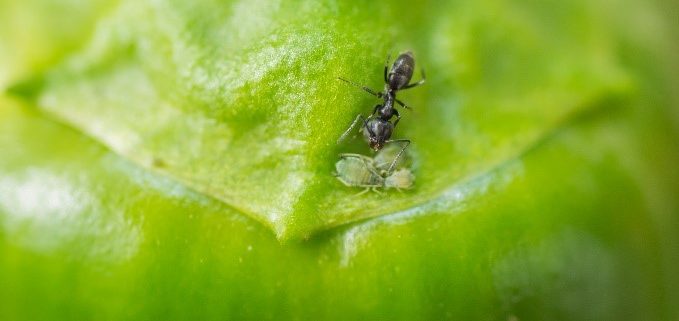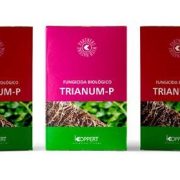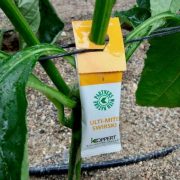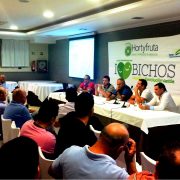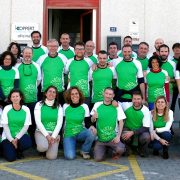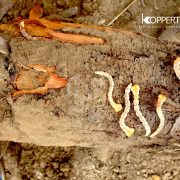The biological control of the aphid in pepper cultivation in the province of Almería
In the latest report regarding the 2018/2019 campaign carried out by the Ministry of Agriculture, Livestock, Fisheries and Sustainable Development, it is reflected that the wintering area in which biological control is carried out in the province of Almeria is more than 23,000 hectares. Pepper cultivation is once again the largest exported product and in which biological control protocols are implemented in its entirety for important pests.
Article by IFAPA-La Mojonera.
In recent years, the use of natural enemies for the control of major pests such as Bemisia tabaci (whitefly) or Frankliniella occidentalis (flower thrips) has resulted in the reduction of these pests and the use of phytosanitary products in horticultural crops of greenhouse. On the other hand, other secondary pests such as aphids are still emerging, since the existence of different species makes their control really complex through biological control, complicating the control of this pest not only by direct damage to the crop, but also by making a relationship of mutualism with the ants due to the need of the latter for the obtaining of sugars that facilitate aphids for feeding the colony. Even species like Aphis gossypii can be vectors of virosis. According to Almeria plant production and health laboratory data, the most common aphid species are: cotton aphid (Aphis gossypii), green aphid (Myzus persicae), legume aphid (Aphis craccivora), aphid of the potato (Macrosiphum euphorbiae).
As for the main strategy used, the perfect pair for the biological control of whitefly and thrips of the flowers in pepper are the arthropods, Amblyseius swirskii and Orius laevigatus. The establishment of “bunker plants” of barley as a refuge plant for Aphidius colemani is the star strategy against the aphid. For this, these plants are established, by way of direct sowing in the greenhouse or in planters distributed by the greenhouse which possess the aphid of the Rhopalosiphum padi cereal to which the wasp can parasitize. It is a very effective strategy against small aphids despite being active in low aphid populations, although their efficiency can be reduced with temperatures above 30 ° C. The action exerted by A.colemani against aphids can be complemented by a wide complex of natural enemies against the aphids available commercially or naturally, accessing the greenhouse spontaneously as is the case with coccinellids, symphids or chrysopids.
The project, “new strategies for the biological control of the aphid in protected horticultural crops” (RTA-2015-00012-C02-01) is composed of a team of multidisciplinary researchers, Francisca Ruano of the department. Zoology of the University of Granada; Monica Gonzalez from the department. biological control of Cajamar Foundation; Pablo Barranco of the department. biology and geology, University of Almería; Estefanía Rodríguez, Mª del Mar Téllez, Jesús Foronda, Carmen Robles-Vallet of IFAPA (Research, Agrarian and Fisheries Training Institute) La Mojonera center. A study on the exclusion of ants with pepper plants inoculated with aphids has been carried out at the Las Palmerillas experimentation center in Almería, which demonstrates how the effectiveness of auxiliary fauna against the aphid is affected in the presence of ants, being Aphidoletes aphidimyza, the natural enemy par excellence that best supports his presence. It is a diptera of the Cecidomyiidae family, whose larvae are predators of this pest. The adult deposits the eggs in the plants that present greater infestation of aphids. When the A. aphidimyza larva finds the aphid, it jabs its jaws by injecting a toxin to immobilize it and then absorb its contents.
A study has been carried out at the facilities of the IFAPA-La Mojonera center in Almería, in which pepper plants with aphids (A. gossypii) distributed in four treatments were used: control (plants with aphid), parasitoid (A.colemani) , predator (A. aphidimyza) and a mixed treatment combining the two control strategies. Monitoring has been carried out for seven weeks in the pepper plants in which it was checked whether the control performed by Aphidius colemani (parasitoid) by counting mummies (parasitized aphids) and larvae of Aphidoletes aphidimyza (predator) against Aphis gossypii in pepper crops it was more effective jointly than separately. The release of the natural enemies of the Parasitoid, Predator and Mixed treatments were consistent with commercial doses.
No differences were found between the parasitoid vs predatory treatment, so both work in a similar way. The efficiency with respect to the control in the mixed treatment is greater since there is a reduction in the number of total live aphids by 70%. This last data was obtained by means of an index of biological control in relation to the mortality of aphids, where the number of mummies of Aphidius and the number of aphids predated by the larva of Aphidoletes has been analyzed. This conclusion opens a new way to continue evaluating the defense behavior of Aphidoletes aphidimyza against ant colonies based on other studies in other agroecosystems where this strategy has been contemplated.





